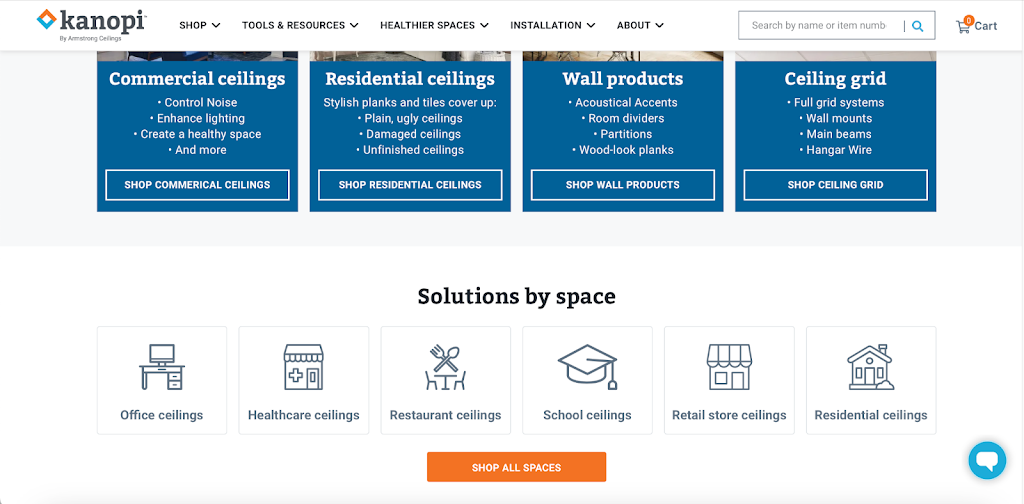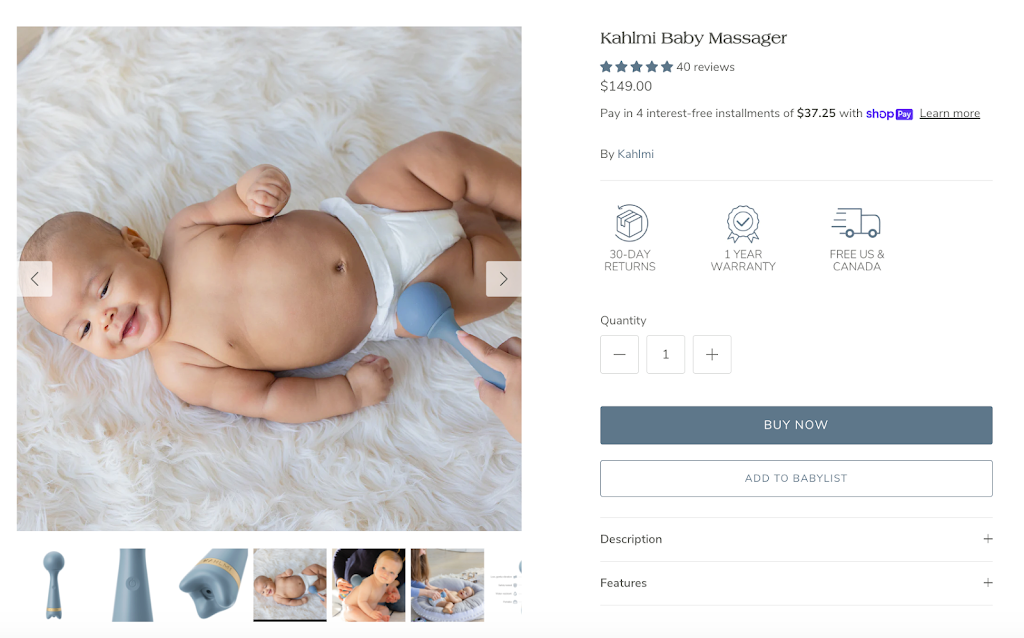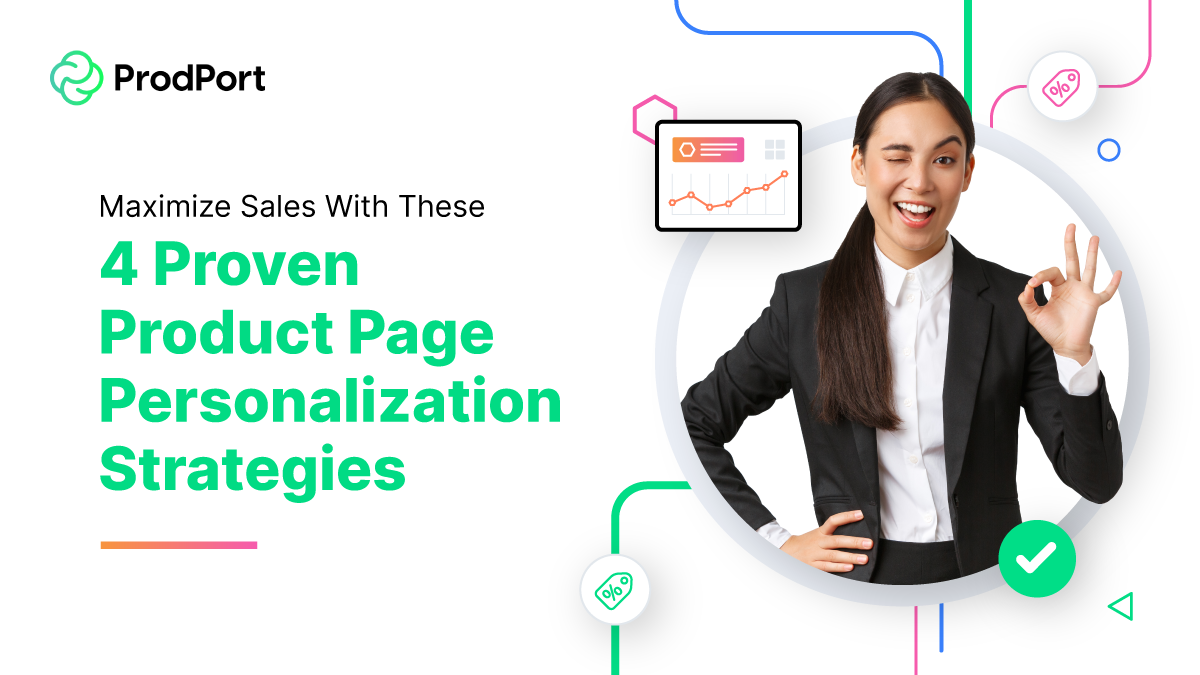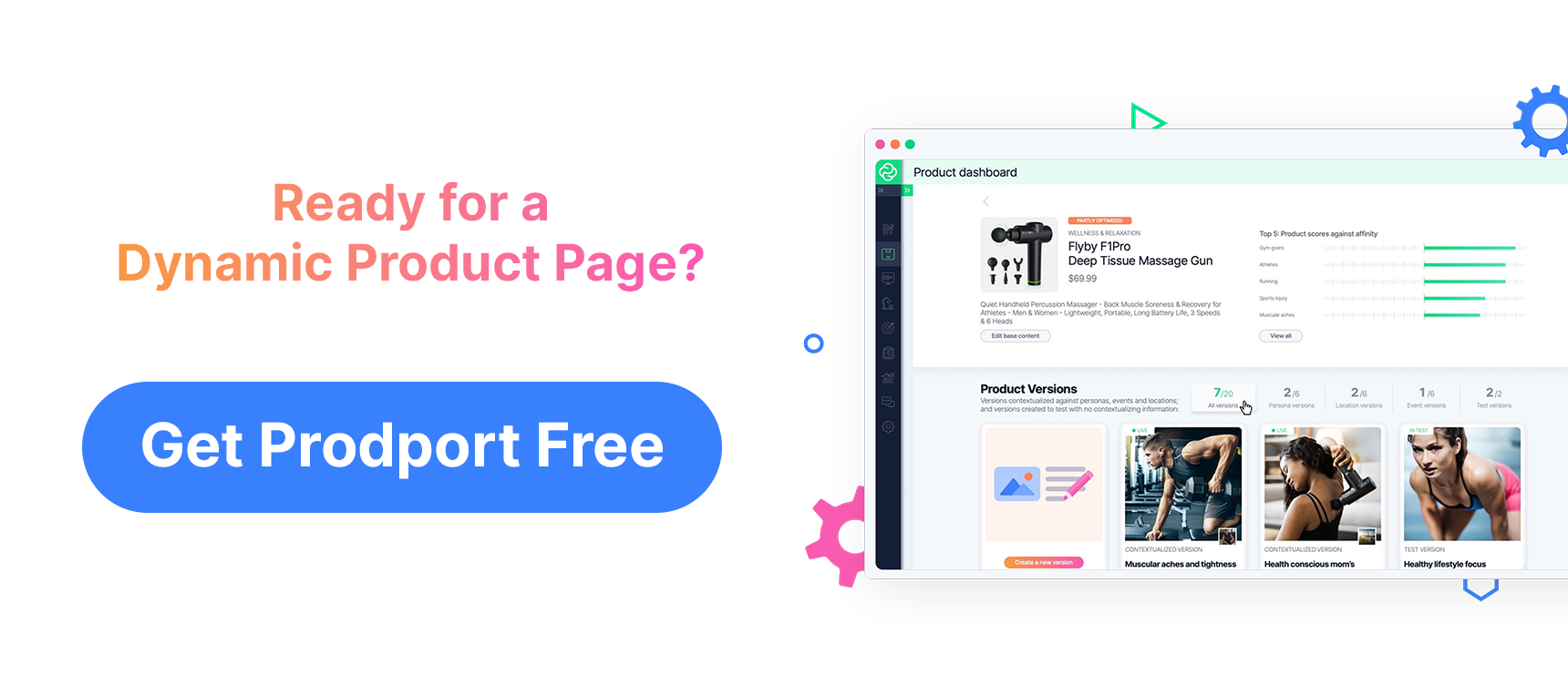Consumers increasingly demand personalization to be a part of the shopping experience. Right now, 71% of consumers expect companies to deliver personalized interactions and 76% get frustrated when this doesn’t happen.
And, while 85% of brands believe they’re offering personalized experiences, only 60% of consumers seem to agree. So how can brands better personalize the online shopping experience?
Product pages are a great place to start. 45% of shoppers say high-quality images and detailed product descriptions are among the leading reasons why they trust a product online. By personalizing these elements, brands may gain even more consumer trust.
Here are four best practices for personalizing and optimizing product pages.
4 best practices for personalizing product pages
1. Speak to customer pain points
73% of customers expect brands to understand their unique needs and 62% expect them to anticipate them. Product page content needs to speak directly to solving consumers’ pain points.
How can you understand your customers’ pain points? By regularly collecting first-party data.
Track user behavior across your site and measure which pages and sections they interact with most frequently.
Using this first-party data, create different personas and tailor your product pages to specific customer segments. Experiment with showing variations in images, product descriptions, and titles according to the segment you’re targeting.
For instance, Kanopi, Armstrong’s interior solutions storefront, personalizes its product pages according to the buyers’ needs. Their products appeal to a wide range of buyers including data centers, offices, education, and healthcare.

Depending on the site visitor’s industry and their interest in product durability, ease of cleaning, installation, and other variables, Kanopi adjusts its product page to showcase these relevant details.
By using personalized product pages for 7+ industries, Kanopi saw a 70% increase in conversions.
2. Analyze the full customer journey
49% of consumers say they would likely become repeat buyers if offered a personalized experience by a retail brand. But often there’s an asymmetry between personalization in the customers’ interaction phase and the product page.
Ads and emails are usually highly customized to the buyer but product pages don’t often feature segment-specific personalization. To give shoppers the personalization they crave, focus on the entire customer journey
When on your site, track the customer’s click behavior, what they search for, and their navigation style. Do they click through from an ad to a product? Or do they spend time evaluating which product is right for them, and create product versions that match their unique needs from your product according to their site behavior.
The customer journey needn’t be limited to on site behavior. External sources like ads, emails, geographical locations, and SMS campaigns can all help you build an accurate picture of your customer.
3. Feature UGC
79% of people say UGC (user-generated content) highly impacts their purchasing decisions.
In fact, 58% of consumers have left an ecommerce store without purchasing because the site didn’t contain any customer reviews or photos.
Including authentic high-quality images of your product in action is a simple way to build trust with your audience. Shoppers want to see natural shots of your product in action. These images act as social proof for your brand.
After all, if others love using your product, why wouldn’t they?
To make sure UGC resonates with your audience, and their expectations of your products, curate different images to match your unique use cases of each product.
For example, baby massager Kahlmi solves multiple problems linked with sleep, gas relief, teething pains, and helps create connection and intimacy. Using different user-generated images, Kahlmi shows how its product can solve these issues. Each customer persona will be shown different UGC depending on the issues they are trying to solve.
By using this ultra-personalized UGC on their product pages, Kahlmi saw a 30% increase in CVR.

4. A/B test different elements and make data-driven decisions
Frequently test different product page elements like the description, image selection, and titles to identify what works best for each audience segment.
Within Prodport’s dashboard, easily track the following metrics from one place:
- CTR
- Time spent on page
- Add to cart
- Conversion rate
- Bounce rate
- Time on product page
Using these metrics, identify which product content versions resonate best with each audience segment’s specific needs. Then, deliver this content according to their user journey and the way they discover your product, whether thats organic search, ads, email, or SMS campaigns.
Within Prodport, review comprehensive data analysis from sources including reviews, social, market, and influencer data to discover new opportunities to personalize product pages.
Boost conversions by testing and personalizing your product pages
Consumers demand personalization from brands. To hold customers’ attention in an increasingly competitive ecommerce space, brands need to optimize and personalize product pages to audience segments.
To achieve this, you’ll need to get to know your customers first. Spend some time identifying their pain points, habits, and preferences. Then tailor the shopping experience to each audience segment.
Ready to take us for a test drive? Sign up for a free trial and get started now!

